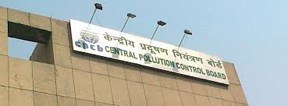 NEW DELHI: Pollution level in Delhi is a “matter of concern”, the country’s anti-pollution watchdog today admitted but disagreed with a WHO study findings that the national capital has the world’s dirtiest air.
NEW DELHI: Pollution level in Delhi is a “matter of concern”, the country’s anti-pollution watchdog today admitted but disagreed with a WHO study findings that the national capital has the world’s dirtiest air.
Days after a WHO study of 1,600 cities found Delhi to have highest concentration of PM2.5 — particulate matters less than 2.5 microns– form of air pollution, which is considered most dangerous, Central Pollution Control Board (CPCB) said despite some steps taken by Delhi government, levels of pollutants have not declined much.
“Although the actual average in Delhi (as measured by our stations) are lower than the values reported in WHO report, the variation does not undermine the fact that particulate matter (PM10 and PM2.5) has been a matter of concern, in Delhi,” CPCB Chairman Susheel Kumar told PTI.
CPCB is a statutory organization under the Environment Ministry entrusted with the powers and functions under the Air (Prevention and Control of Pollution) Act, 1981.
“The situation becomes more critical with municipality and complexity of sources and unfavorable meteorological conditions, especially low winds and mixing height during winter months,” Kumar said.
He said that the prominent sources of PM emissions in Delhi include road dust re-suspension, vehicular exhaust emissions, and industries including power plants.
“It appears that the pace of growth has off-set the benefits of mitigation actions,” Susheel Kumar said.
The WHO data has revealed that the situation is so bad in Delhi that its air has PM2.5 concentrations of 153 micrograms and PM10 concentrations of 286 micrograms–much more than the permissible limits.
This form of concentration consists of tiny particles that puts people at additional risk of respiratory diseases and other health problems, the World Health Organization has said.
But, according to CPCB data for 2013, the PM10 concentration in Delhi was 237 and PM2.5 was 112. The Indian watchdog, however, also noted that the permissible limit for the two according to domestic standards was 60 and 40 respectively as against the WHO guidelines’ figures of 20 and 10 respectively.
Green NGO Centre for Science and Environment (CSE), which has termed as “shocker” the latest WHO data, had demanded a response from the government “to the public health crisis”.–PTI






